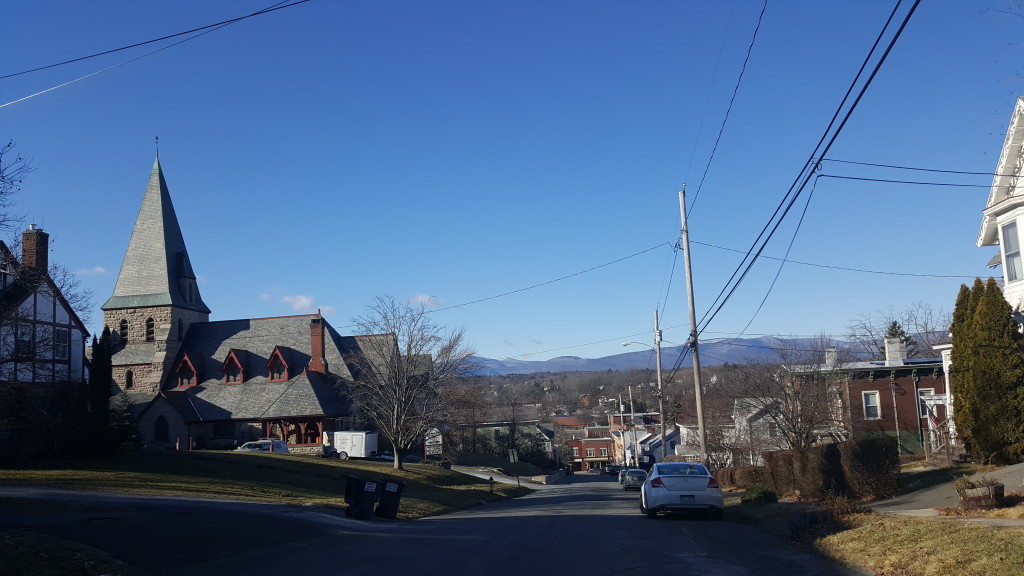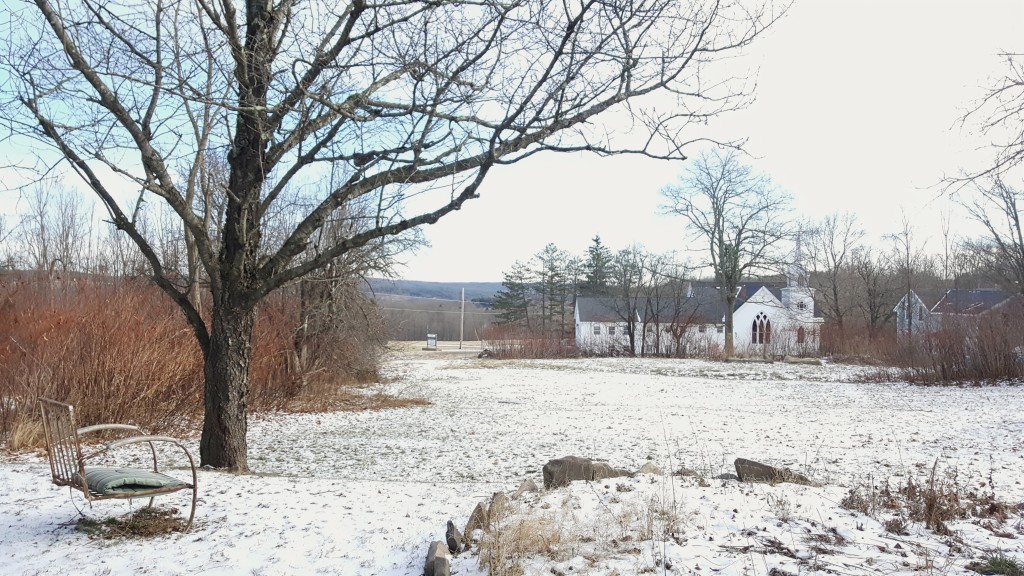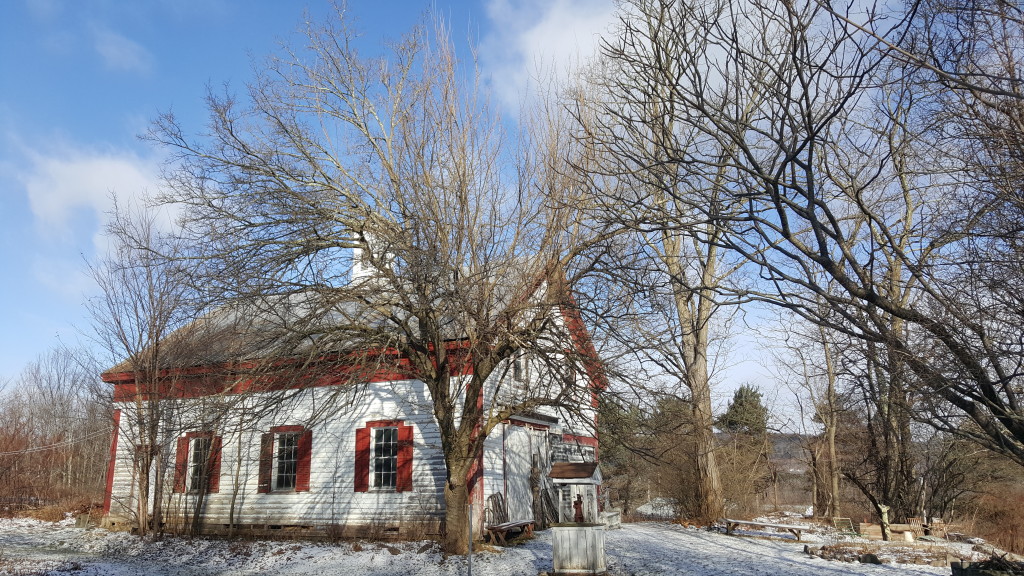32F at 8.30am with clear skies: bright and sunny. 35F by 3pm and densely overcast.
A return to the stunning Slide Mountain for the second time this year, ascending into the seductive clutches of a dense forest of snow-laden conifers, with a copy of John Burroughs’ In The Catskills. A commemorative plaque to Burroughs is affixed to a large rock at the summit under which the writer frequently camped. Slide is so named because of a landslide that occurred in the early nineteenth century on its north face where the scar is still apparent after having been refreshed by another landslide in 1992 and the entire area was thoroughly traversed by the writer.
Winter hiking in the Catskills is mostly magical, tranquil beauty but uncomfortable if you’re ill prepared and occasionally terrifying. I’ve been conveying my winter hiking experiences here under the Outdoors section on Upstate Dispatch. Or, rather, I’ve been writing about what could possibly go wrong should you decide to attempt a Catskills high peak when it’s 10˚F and weather conditions are a fickle master. True to my British nature, I seem to have created A Pessimist’s Guide to Winter Hiking or a Pessimist’s Guide to Conquering Winter Summits. Last year, I decided to attempt to hike all 35 Catskills peaks over 3500ft in order to join the Catskills 3500 Club and there are four extra peaks required in the winter. What I discovered after having hiked those four is that you can see a lot more of the landscape when it has lost most of its foliage. You literally get the lay of the land. So I’ve been continuing down the list instead of doing the sensible thing and waiting for the spring thaw. However, winter hiking is not for the uncertain.
21F at 9am and mostly sunny.

© Niva Dorell 10am
25F by 10am with a mixture of sun and clouds.

© Niva Dorell 10.30am
10F at 9am with a mix of bright sun and clouds.

© Niva Dorell 9.30am
There’s a part of the final metres of the ascent to Blackhead Mountain that is a vertical climb and one from which you should not look back down if you suffer the slightest vertigo or you will invite a case of the wobblies. It’s even worse now that it’s entombed in ice. My husband and dog hopped up it like mountain goats and I was left in the metaphorical dust, grappling with uncertainty, stabbing my spikes into the ice and, finally, hoisting myself up over the rocks with the roots of an aging birch tree. As I finally managed to haul myself over the top, I wondered if there was such a thing as hand crampons attached to a set of gloves because they would have made the job much easier.
Oh, the joy of crampons. It’s nice to muster a decent pace with a good, long stride on the Catskills trails and I’m talking about the sort of stride that confirms the saying “to stretch the legs”, which British people call going for a walk. The only way you can do that in is in the winter on long stretches of iced mud, wearing crampons or “spikes”. Most Catskills trails are rocky, and I understand when I hear about hikers who go barefoot in good weather, because it’s easy to lose your footing if it’s wet or mossy. In the autumn, when the trail is covered with leaves, it’s too easy to slip between rocks and turn an ankle, especially when you’re on your descent and tired. Crampons are inadvisable other than when it’s icy or snowing because otherwise you’ll punch up the trail. They and snowshoes both make winter hiking rather special. Hillsound make a fabulous set for a reasonable price and I wore a pair yesterday for the very first time. Hillsound had sent us two pairs to try out for free and I love them.